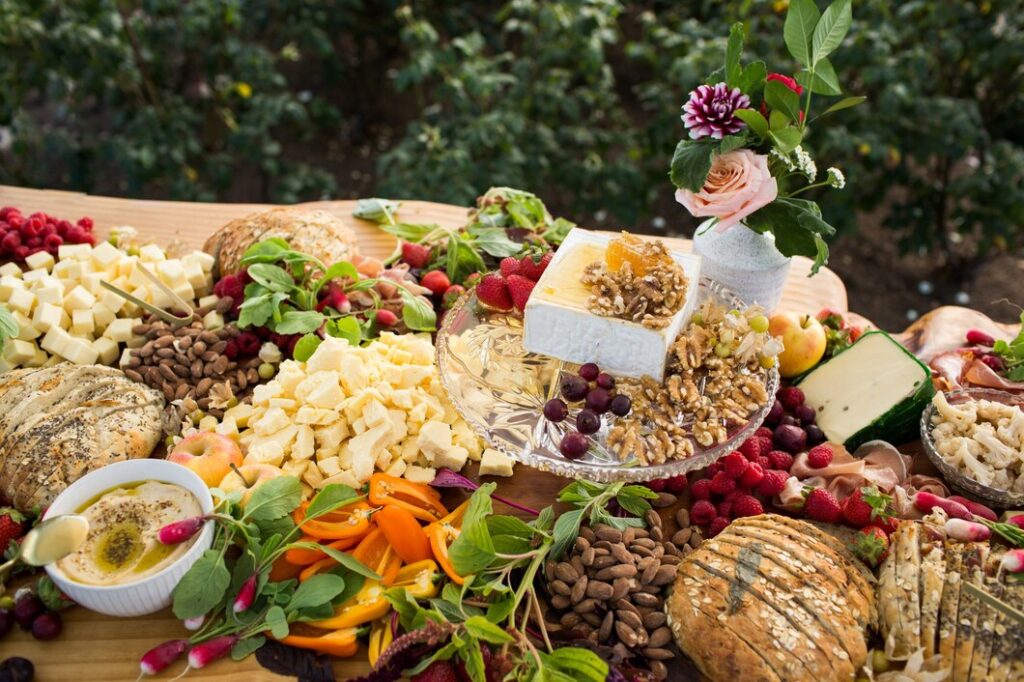
In today’s health-conscious world, we’re always on the lookout for nutritious snacks that not only satisfy our cravings but also provide essential vitamins and minerals. One such category that stands out is dry fruits. These tiny delights pack a powerful punch of nutrients while offering a burst of natural sweetness. Let’s dive into the world of dry fruits and uncover the treasures they hold.
Table of Contents
| Sr# | Headings |
|---|---|
| 1. | Introduction |
| 2. | What Are Dry Fruits? |
| 3. | Types of Dry Fruits |
| 4. | Health Benefits |
| 5. | Incorporating Dry Fruits Into Your Diet |
| 6. | How to Store Dry Fruits Properly |
| 7. | Nutritional Value |
| 8. | Cooking With Dry Fruits |
| 9. | Hydration and Dry Fruits |
| 10. | Sustainability of Dry Fruits |
| 11. | Conclusion |
| 12. | FAQs |
1. Introduction
Dry fruits, also known as dried fruits or nuts, are fruits from which the majority of the original water content has been removed either naturally, through sun drying, or through specialized dehydration processes. These concentrated bursts of flavor and nutrition have been cherished for centuries, prized for their long shelf life and health benefits.
2. What Are Dry Fruits?
Dry fruits are fruits that have undergone a dehydration process to remove water content, leaving behind the concentrated nutrients and flavors. They come in various forms, including berries, nuts, and seeds. This process preserves their nutritional value while enhancing their shelf life.
3. Types of Dry Fruits
Popular varieties of dry fruits include:
- Almonds: Rich in vitamin E and healthy fats.
- Cashews: Packed with minerals like magnesium and zinc.
- Dates: Natural sweeteners loaded with fiber and antioxidants.
- Raisins: Sweet and tangy, providing iron and potassium.
- Walnuts: Omega-3 fatty acids for heart health.
4. Health Benefits
Dry fruits offer a plethora of health benefits, including improved heart health, enhanced digestion, and boosted immunity. They are nutrient-dense snacks that can help regulate blood sugar levels and promote weight management when consumed in moderation.
5. Incorporating Dry Fruits Into Your Diet
Adding dry fruits to your daily diet is simple and versatile. Sprinkle them over salads, cereals, or yogurt for added crunch and nutrition. They can also be blended into smoothies or ground into flour for baking healthier treats.
6. How to Store Dry Fruits Properly
Proper storage is essential to maintain the freshness and flavor of dry fruits. Store them in airtight containers in a cool, dry place away from sunlight. Refrigeration can extend their shelf life further.
7. Nutritional Value
Nutritional composition of common dry fruits (per 100g):
- Almonds: Protein – 21g, Fat – 49g, Carbs – 22g
- Cashews: Protein – 18g, Fat – 44g, Carbs – 30g
- Dates: Protein – 2g, Fat – 0.4g, Carbs – 75g
- Raisins: Protein – 3g, Fat – 0.5g, Carbs – 79g
- Walnuts: Protein – 15g, Fat – 65g, Carbs – 14g
8. Cooking With Dry Fruits
Dry fruits can elevate the flavor profile of both savory and sweet dishes. Use them in baking cookies, cakes, and bread, or incorporate them into savory dishes like pilafs and salads for added texture and sweetness.
9. Hydration and Dry Fruits
While dry fruits are nutrient-dense, it’s important to remember that they lack the water content found in fresh fruits. Ensure you stay hydrated by drinking plenty of water throughout the day, especially when consuming dry fruits.
10. Sustainability of Dry Fruits
The sustainability of dry fruits depends on various factors such as farming practices, water usage, and transportation methods. Opting for organic, locally sourced dry fruits can reduce environmental impact and support sustainable agriculture practices.
11. Conclusion
In conclusion, dry fruits are not only delicious but also offer a myriad of health benefits. From almonds to raisins, these nutrient-packed snacks are a convenient way to boost your daily intake of essential vitamins and minerals. Whether enjoyed on their own or incorporated into various dishes, dry fruits are a wholesome addition to any diet.
12. FAQs
1. Are dry fruits a good source of protein? Dry fruits contain some amount of protein, but they are primarily known for their healthy fats, fiber, and essential nutrients.
2. Can I eat dry fruits if I have diabetes? While dry fruits contain natural sugars, they can be included in a diabetic diet in moderation, preferably as part of a balanced meal or snack.
3. How many dry fruits should I eat in a day? The recommended serving size of dry fruits varies depending on individual dietary needs and calorie intake. It’s best to consume them in moderation to avoid excess calorie intake.
4. Are all dry fruits equally nutritious? Different dry fruits offer varying nutritional profiles, so it’s beneficial to include a variety of them in your diet to ensure you receive a wide range of nutrients.
5. Can I eat dry fruits if I’m trying to lose weight? While dry fruits are nutrient-dense and offer numerous health benefits, they are also calorie-dense. Portion control is key when incorporating them into a weight loss plan.